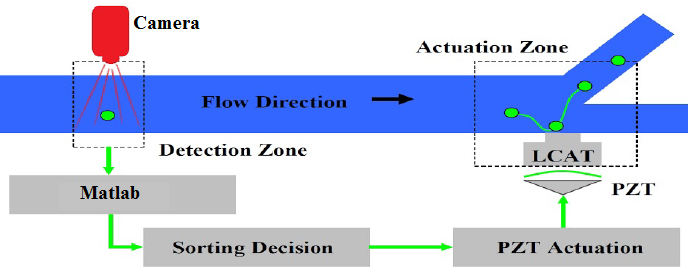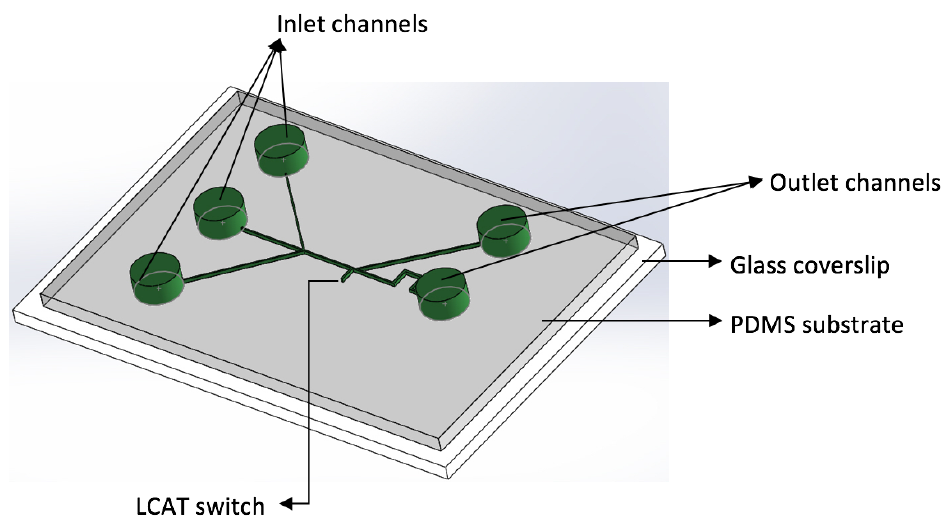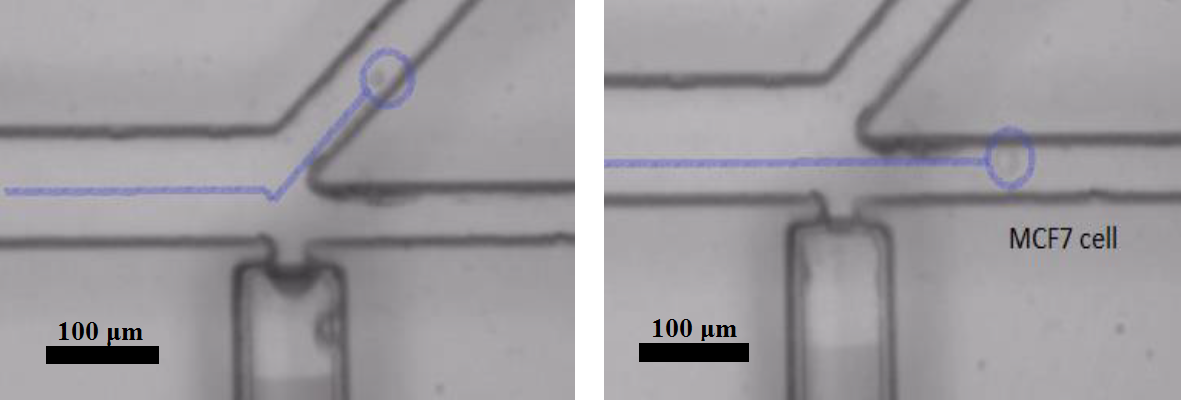 Lacoustic
Lacoustic
 Lacoustic
Lacoustic
Lateral Cavity Acoustic Transducers (LCAT) is dead-end side channel that traps air creating an air/liquid interface that can be excited using an external acoustic energy source.
When cells flow toward a activated LCAT, the oscillatory motion of this interface generates a steady micro-streaming vortex that is able to deflect the direction of cell flow [3].


The LCAT switch device consists of 2 substrates: the top substrate is polydimethylsiloxane (PDMS); the bottom substrate is thick glass. The devices only requires single layer fabrication using standard soft-lithography techniques.
The PDMS with the microchannels and the blocks is molded from an SU-8 master fabricated on a silicon wafer. Then, this is exposed to a UV light through a transparency mask to obtain the desired microchannel patterns. PDMS base is mixed with the curing agent at the ratio of 10:1 respectively, and is poured on the Si-mold that is then cured for 30 minutes at 90°C in the oven.
Finally, the device is cut and plasma bonded to glass coverslips.

(Left) The image of a breast cancer cell MCF7 is switched to the upper collecting channel at 13 Vpp. The core fluid stream is focused closer toward the air/ liquid interface, creating maximum deflection. (Right) the cell is focused straight to waste channel when the LCAT switch is off.
[3] Patel, Maulik, and Abraham Lee. "Cavity-induced Microstreaming for Simultaneous On-chip Pumping and Size-based Separation of Cells and Particles." Cavity-induced Microstreaming for Simultaneous On-chip Pumping and Size-based Separation of Cells and Particles - Lab on a Chip (RSC Publishing). The Royal Society of Chemistry, 15 Apr. 2014. Web. 3 Mar. 2017.